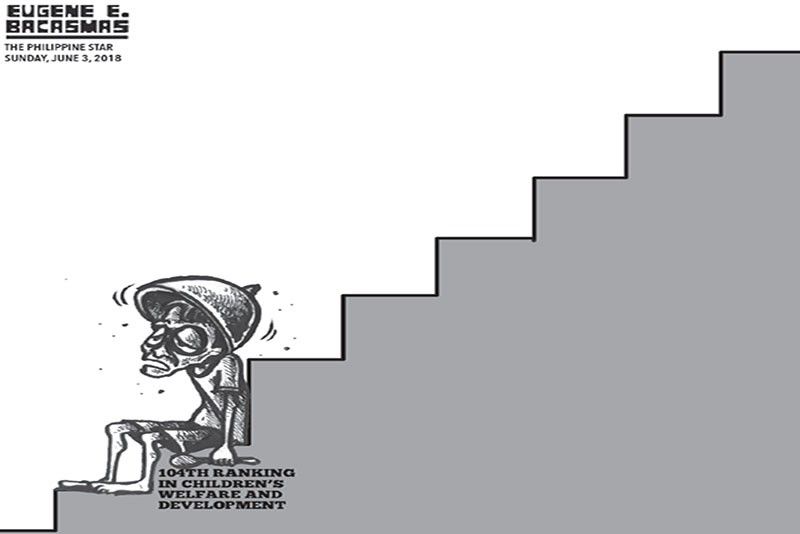EDITORIAL - Threatened children

The Philippines continues to be one of the best performing economies in the region, sustaining growth figures and keeping its investment-grade credit rating. At the same time, however, there are persistent indicators that the benefits of growth are not being felt in the bottom rungs of society, with poverty incidence still high despite cash transfers and other mitigation measures.
The latest indicator is the Philippines’ fall by eight notches in an annual study on the best and worst countries for children to grow up in, from 96th place last year to 104th among 175 economies. The 2018 End of Childhood Index was drawn up by international advocacy group Save the Children.
Rankings are based on how threatened children are as a result of poor health, malnutrition, exclusion from education, extreme violence, child labor, child marriage and early pregnancy. The Philippines performed poorly in terms of teenage childbearing, under-five mortality and severe malnutrition, with stunting afflicting one in three children below five years old, according to the report.
Around the world, approximately 153 million children live in areas where their welfare is threatened by poverty combined with violence and strong discrimination against girls, according to the report. It showed that disease and malnutrition, including inadequate access to health care, were responsible for 20 times more children’s deaths than violence in conflict zones.
Among the developing countries in Southeast Asia, Thailand ranked higher than the Philippines, placing 85th while Vietnam ranked 96th. Advanced economies led the list of countries where children enjoy the best protection, with Singapore placing first followed by Slovenia and Norway.
Save the Children released the research ahead of International Children’s Day on June 1. Its title, “The Many Faces of Exclusion,” indicates the challenges for the Philippines in making its much-touted economic growth inclusive.
- Latest
- Trending


























